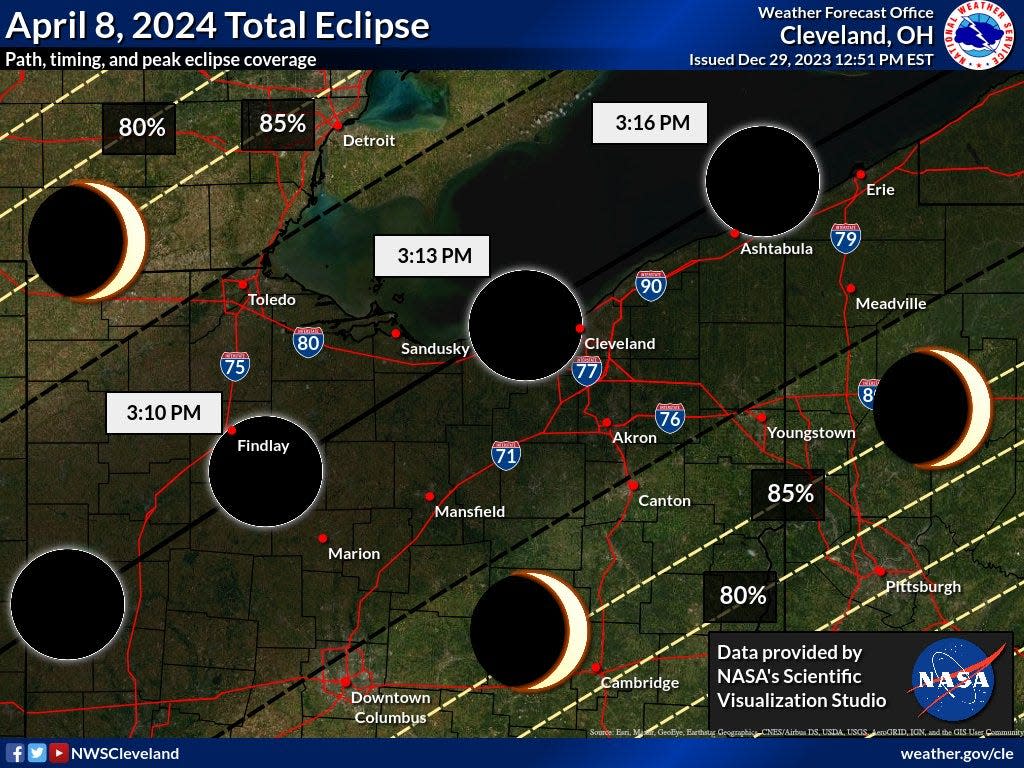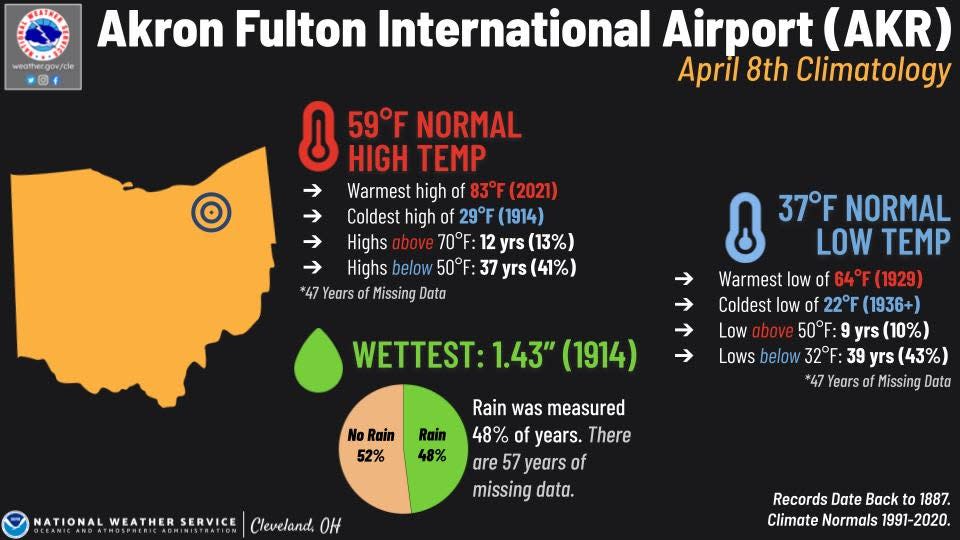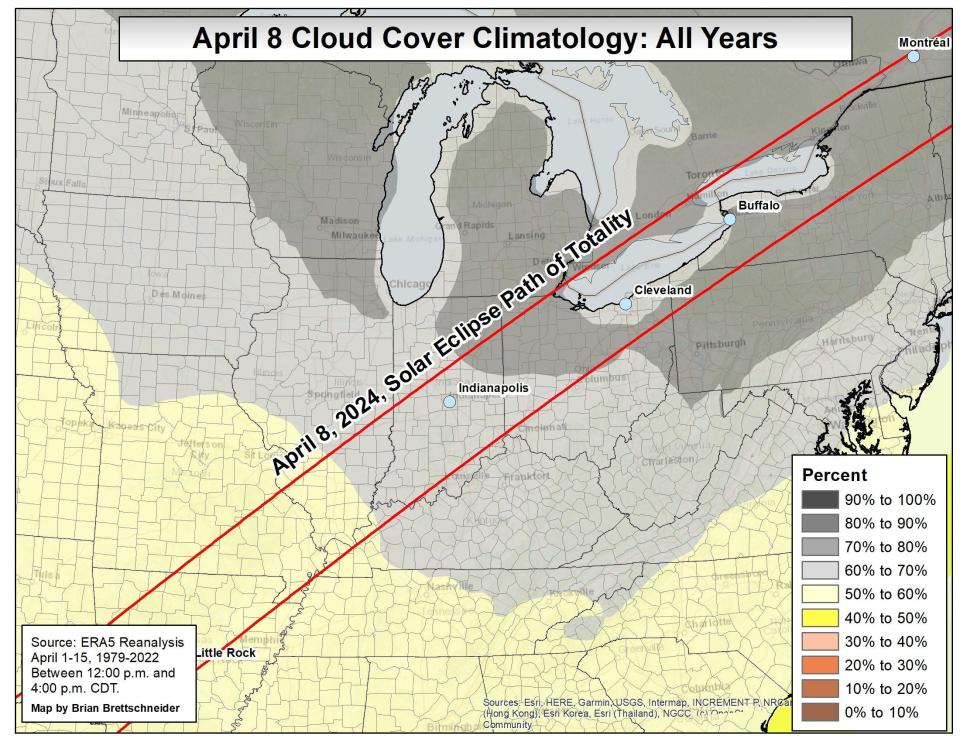Eclipse countdown: Don't be in the dark about the total eclipse. Here's what you need to know

No matter the weather − rain, snow or shine − everyone in northern Ohio will be in the dark on April 8.
For the first time in 200 years, Ohio will be in the path of a total eclipse on April 8.
The last time the sky went dark in the state from a total eclipse was way back in 1806 and it won't happen again until 2099.
State and local officials are expecting the population in the path of the total eclipse in northern Ohio could double from visitors flocking to the area to take in the truly once-in-a-lifetime event.
Some businesses, including doctor's offices, are closing for the day, and many northern Ohio school districts are giving the kids the day off.
What's the eclipse timeline across northern Ohio?
The National Weather Service says the eclipse will start in Texas and then make its way across the country, passing over states including Oklahoma, Arkansas, Missouri, Illinois, Kentucky and Indiana before arriving in Ohio.
For Greater Akron, the eclipse will begin at 1:59 p.m. as the moon slowly casts its shadow across the sun.
Totality or complete darkness in Akron will be at 3:15 p.m. and last two minutes and 49 seconds.
It will slowly get brighter outside, and the eclipse will end at 4:29 p.m.
Findlay will experience totality between 3:10 p.m. and 3:15 p.m.
For Cleveland, it will be totally dark between 3:13 p.m. 3:17 p.m.
And in Erie, Pennsylvania, the totality will be between 3:16 p.m. and 3:20 p.m.
What to expect when the eclipse happens?
Things will progress slowly during the eclipse.
Think of it like the world's slowest dimmer switch.
It will get progressively darker once the celestial event starts.
At the peak of totality, it will be as dark as night in northern Ohio with the street lights aglow.
It will also get chilly.
Experts say the temperature could drop by as many as 15 degrees at the peak of the eclipse.
And then, the reverse will happen.
It will get progressively brighter as more and more of the sun becomes exposed.

What will weather be like on April 8?
The total eclipse will happen rain or shine or even a snow squall.
And looking back at decades of weather records for places like Akron and Canton, it's pretty much a coinflip whether the weather will cooperate.
The odds of rain falling are about 48%, and the chance of snow being part of that precipitation on average is 8.8%.
The average high for April 8 in Greater Akron is 59 degrees with the average low of 37 degrees.
The record high for that date in Akron is 83 degrees reached in 2021; the record low of 22 degrees was set in 1936.
The most snow that has ever fallen in Greater Akron on that particular date was 2.7 inches in 1985 and the rainiest April 8 on record was in 1980 when .9 inches fell.

Looking back at the past five years of weather conditions recorded at the Akron-Canton Airport, the skies have been cloudy in four out of the five years at the point of when the total eclipse will happen.
And looking back even farther than that, it has been cloudy at the airport around 55% of the time on April 8.
This article originally appeared on Akron Beacon Journal: What you need to know about total eclipse in northern Ohio April 8

